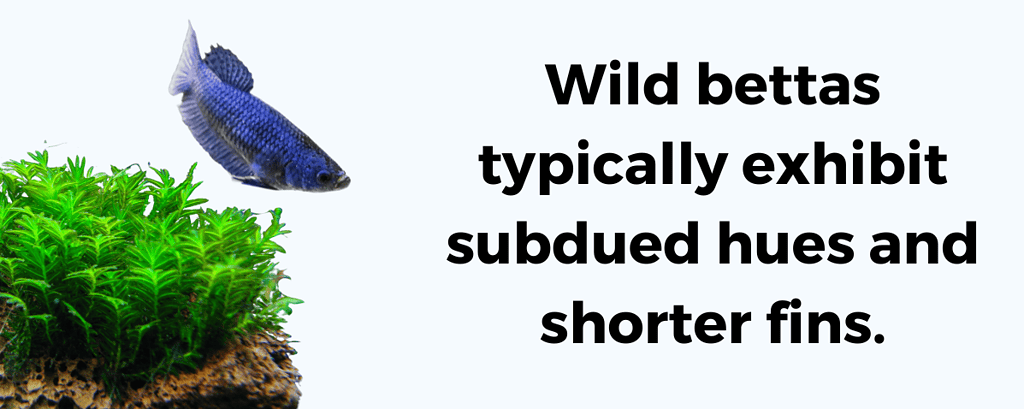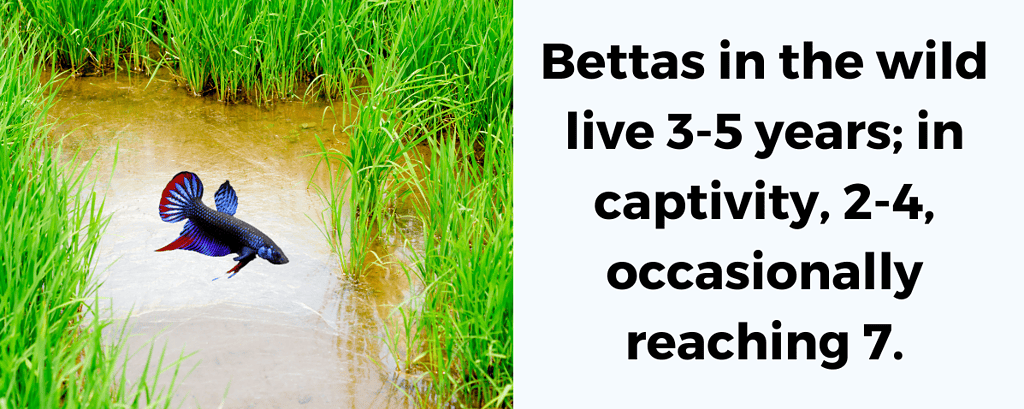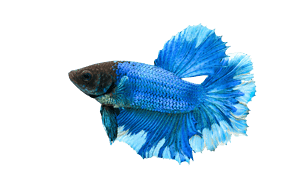Betta fish, with their dazzling scales and swift, dart-like movements, have become stars in many households.
But the question that piques your curiosity might be, “Where do betta fish live in the wild? What wild wonders turn them into such attention grabbers?” Bettas enthusiasts often ponder this enigma.
After a raft of research and frequent trips to their native habitats, I’m primed to take you on an expedition.
We’ll dig into the Asian landscapes where bettas flourish.
This voyage will show you the bettas’ natural living conditions and guide you on replicating a bit of that wild in your home aquarium.
Time to dive deep into the bettas’ habitat mystery and answer the burning question, “What places in the wild do betta fish consider home?“

Table of Contents
Geographic Distribution

Native Habitat
Betta fish, native to Southeast Asia’s vibrant waterways, add a splash of color underwater.
Their flamboyant personalities and striking colors make them standouts in the ecosystems of Thailand, Cambodia, Laos, Malaysia, Indonesia, and Borneo.
Tales of Different Tails: Species Overview
Not all bettas are the same. Their species varies depending on their regional habitat!
Betta splendens
Betta splendens, the commonly known betta, comes primarily from Thailand. However, it’s hardly the only star of the aquatic show.
Betta macrostoma
Our scenic journey brings us to Borneo, home to the sought-after Betta macrostoma.
This betta variety, popular for its remarkable blue and orange hues, is a true gem.
Betta imbellis
Our next stop is Cambodia, home of the Betta imbellis. This species might not be the flashiest, but it proves that personality matters.
Betta coccina
And don’t forget about Betta coccina! These fiery fish hail from Malaysia and Sumatra’s peat swamps.
The Quirky Habitat of Betta Fish

Puddle-Slick Homes
Betta fish prefer the shallows, found more in ankle-deep puddles than sea depths.
They’re often seen in rice paddy waters. Surprising, right? When you’re rushing for rice at the store, bettas are gliding in paddy fields!
Betta Fish’s Water Oasis
Bettas dwell in stagnant ponds, marshlands, and leaky streams. If you’re picturing pristine waters, think again.
Bettas aren’t water influencers concerned with precise pH levels. They’re resilient, thriving even in murky waters.
Betta Preferences: Not Just Pretty Fins
While bettas are colorful show-offs, they aren’t fussy about their habitats.
They tolerate varying temperatures, pH levels, oxygen content, vegetation, and water quality.
Like outdated Facebook statuses, these aquatic abodes change rapidly.
With fluctuating love-hate feelings towards aquatic plants, bettas enjoy diverse landscapes.
Battle of “Bubble-Nesting” Vs. “Mouth-Brooding”
In the habitat-choice wrestle, we have the bubble-blowing bettas vs. mouth-brooding clans. Both are equally intriguing and victorious in their styles.
Bubble-nesters, skilled bubble blowers, prefer surface habitats with ample vegetation, while mouth-brooders, cradling their offspring orally, opt for diverse shallow to moderately deep areas.
In the betta world, variety truly spices up their life!
Survival Skills

Betta fish boasts special biological features enabling survival in tough conditions such as oxygen-poor rice paddies, streams, and stale pools in Southeast Asia.
Curious how? Let’s delve into the labyrinth organ!
Labyrinth Organ – Bettas’ Breathtaking Wonder
Betta fish’s key adaptation is their unique labyrinth organ, acting like a “fish lung.”
It enhances bettas by allowing them to breathe air from the water’s surface.
Unlike fish stuck underwater, bettas can now dwell on top, vastly expanding their abode!
Labyrinth Organ Affecting Behavior
What would bettas do with such an air-breathing superpower? Flaunt it, of course! The labyrinth organ shapes unique actions.
They often display “gulping” behavior – a swift surface leap for air akin to grabbing a quick snack.
This gulp often triggers bubble nest building, turning involuntary gasping into the trendy decor.
However, this adaptation also crafts bettas’ territoriality. Basically, they’re not great at sharing breathing space.
Colors, Fins, Character – All in One!
Beyond breathtaking adaptations, bettas flash vibrant colors, wave decorous fins, and exhibit assertive temperaments – elements integral to their survival strategy.
While your housed betta enjoys a plush life, remember each trait highlights its fascinating lineage and survival-driven instincts. Now that’s a captivating fish saga!
European Discoveries

In the mid-1800s, Europe met Southeast Asia’s hidden wonder—the lively Betta fish.
These colorful fishes dazzled the explorers, earning them a name after the ancient Asian warrior tribe, Bettah, to honor their lively spirit.
From Wild to Domesticated
Meanwhile, in Thailand, locals recognized more than just the Betta’s charisma.
These fish were strong, feisty, and resilient—traits that made them the chosen lot for fish fighting, a popular and dark sport in the region.
Their striking colors, unique flair, and almost human-like endurance made them icons of vitality.
Westward Travel
With the arrival of the 20th century, Betta fish left their native waters for a new life in the West.
No longer fighters, they emerged as beloved pets and displayed animals in the pet-loving Western world.
These lively, aesthetically pleasing fish soon became widely appreciated pets, revered for their beauty and appeal.
A Splash of Variety

Ever marveled at the array of betta fish colors, shapes, and unique personalities?
Such diversity wasn’t always present – these tiny aquatic wonders have evolved immensely from their rice paddy origins.
Betta Breeds – Mix of Common to Exotic
In captivity, betta fish show off a dazzling spectrum of colors, fins, and scales, a tribute to human ingenuity.
From backyard hobbyists to professional breeders, you’ll encounter bettas from standard veiltail to dramatic halfmoon, each with a story to share.
The Veiltail (VT) is the typical captive betta, featuring a long tail that flows gracefully like a veil.
The Crowntail (CT) earns its royal name from its strikingly spiked tail resembling a crown.
The Halfmoon (HM) turns heads with its tail forming an immaculate D-shape when flared, capturing the essence of a half-moon.
The fin-modest Plakat (PK) might not have lavish tails like Veiltail or Halfmoon, but its robust body and short, rounded fins command attention.
Contrasting Worlds – Captive vs. Wild Bettas
Exotic captive bettas certainly dazzle, but don’t overlook their humble wild counterparts. Wild bettas generally have short fins and subdued colors.
Think of the wild betta as the unsung poet of the betta world – less ornate but equally captivating in its simplicity.
More reserved than captive breeds, wild bettas perhaps adapt to the survival demands of their native habitats.
While captive bettas may face health problems due to their ornate fins (like fin rot or tearing), wild bettas’ modest fins keep them free from such issues.
In short, each betta excels where the other falls short.
Be it the understated allure of wild bettas or the enchanting beauty of captive ones, every type holds a unique charm, making betta keeping an engaging hobby!
Invasive Potential

Wondering how this delightful, color-rich pet could wreak havoc? It mostly boils down to careless pet ownership.
Mistakenly or on purpose, pet owners often release their betta fish into wild water bodies.
Puddles of Trouble: Invasion Disturbs Ecosystem
Such callous choices prove problematic when these non-native bettas adapt to their newfound freedom.
After settling in, bettas reproduce at alarming rates, a classic invasive species trend.
Their explosive growth disturbs local water habitats and biodiversity, causing far-reaching effects.
These adaptable and aggressive newbies compete with local species for resources like food and territory.
Over time, this can result in a dwindling, even extinct local species population, disturbing the ecological harmony stealthily yet significantly.
A Worldwide Woe: The Betta Boom
These tiny bettas, beautiful yet harmful, have turned unsolicited visitors into global pockets, causing unexpected harm.
Florida, for instance, has seen rising encounters with this Asian aquatic intruder.
Australia, too is wary of the growing betta numbers threatening its water habitats.
While owning a betta fish is undoubtedly enjoyable, it’s also an opportunity to be mindful pet owners committed to maintaining nature’s complex biodiversity tapestry.
Lifespan and Aging

Wild vs. Captive Lifespan
In the untamed wild, betta fish normally live for three to five years.
Tucked away in captivity, their lifespan typically stretches from two to four years, with an occasional seven-year sprint!
Lifespan Factors
You might ask, “What affects my betta fish’s lifespan?” Various factors come into play, such as genetics, environment, diet, and stress.
For example, bettas with robust parentage tend to live longer, indicating the role of strong genetics.
Environment and Diet
Your betta’s dwelling and diet crucially impact its lifespan.
Clean, warm water with a stable temperature steers clear of stress and disease, fostering a healthier, lengthier life.
As for food, bettas thrive on a balanced, protein-rich diet. After all, you wouldn’t survive on chips and soda alone, would you?
Stress and Disease
Bettas, like us, are prone to the blowback of stress and disease. Germs and fungi lurk around and can seriously dent their lifespan if not addressed.
The Secret to a Long, Happy Life
But fret not! The route to a long, merry life for your betta isn’t steep.
Regular tank maintenance, a protein-rich diet occasionally spiced with live food, and stress removal can work wonders. Basically, providing the greatest betta fish care.
So, kick back and enjoy. Get these tips working and brace for many joyous years with your finned friend.
While you can’t technically add years to your life by extending your betta’s, it sure feels that way!
Frequently Asked Questions

How many species of betta fish exist in the wild?
Betta fish species number over 70 in the wild, neatly grouped as bubble-nesters or mouth-brooders, depending on their egg-tending strategy.
Stars of the show include Betta splendens, Betta imbellis, Betta macrostoma, and Betta coccina.
What challenges do wild betta fish face?
Wild bettas confront multiple threats: habitat loss, pollution, overfishing, non-native species, and climate change.
These disrupt their aquatic environment, placing some bettas on the jeopardy list.
How do wild betta fish communicate?
Bettas communicate with a range of visual, auditory, and chemical signals.
Displaying vibrant colors, flicking fins, producing distinct sounds—think betta beatbox—and sensing pheromones make up betta chatter.
It’s a sensory extravaganza in the aquatic neighborhood.


